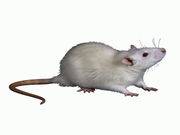In experimental study, prevents senescent cell accumulation, phenotype expression
MONDAY, March 21, 2016 (HealthDay News) — A novel mechanism has been proposed for the role of exercise in mitigating the detrimental impact of a fast-food diet (FFD) in mice, via prevention of cellular senescence, according to an experimental study published March 16 in Diabetes.
Marissa J. Schafer, Ph.D., from the Mayo Clinic in Rochester, Minn., and colleagues examined the extent to which diet and exercise affect the behavior and accretion of senescent cells within distinct tissues. Using transgenic mice that express enhanced green fluorescent protein (EGFP) in response to activation of the senescence-associated p16INK4a promoter, the authors examined whether exercise prevents senescent cell accumulation and systemic metabolic dysfunction induced by a FFD.
The researchers demonstrated that FFD consumption caused deleterious changes in body weight and composition, and in measures of physical, cardiac, and metabolic health. FFD correlated with increases in several markers of senescence, including p16, EGFP, senescence-associated β-galactosidase, and the senescence-associated secretory phenotype (SASP), specifically in visceral adipose tissue. Exercise was found to prevent the accumulation of senescent cells and SASP expression. Following long-term FFD-feeding, exercise correlated with reductions in senescent phenotype markers in visceral adipose tissue, and attenuated physical impairments.
“These findings highlight a novel mechanism by which exercise mediates its beneficial effects and reinforce the impact of modifiable lifestyle choices on health span,” the authors write.
Copyright © 2016 HealthDay. All rights reserved.








